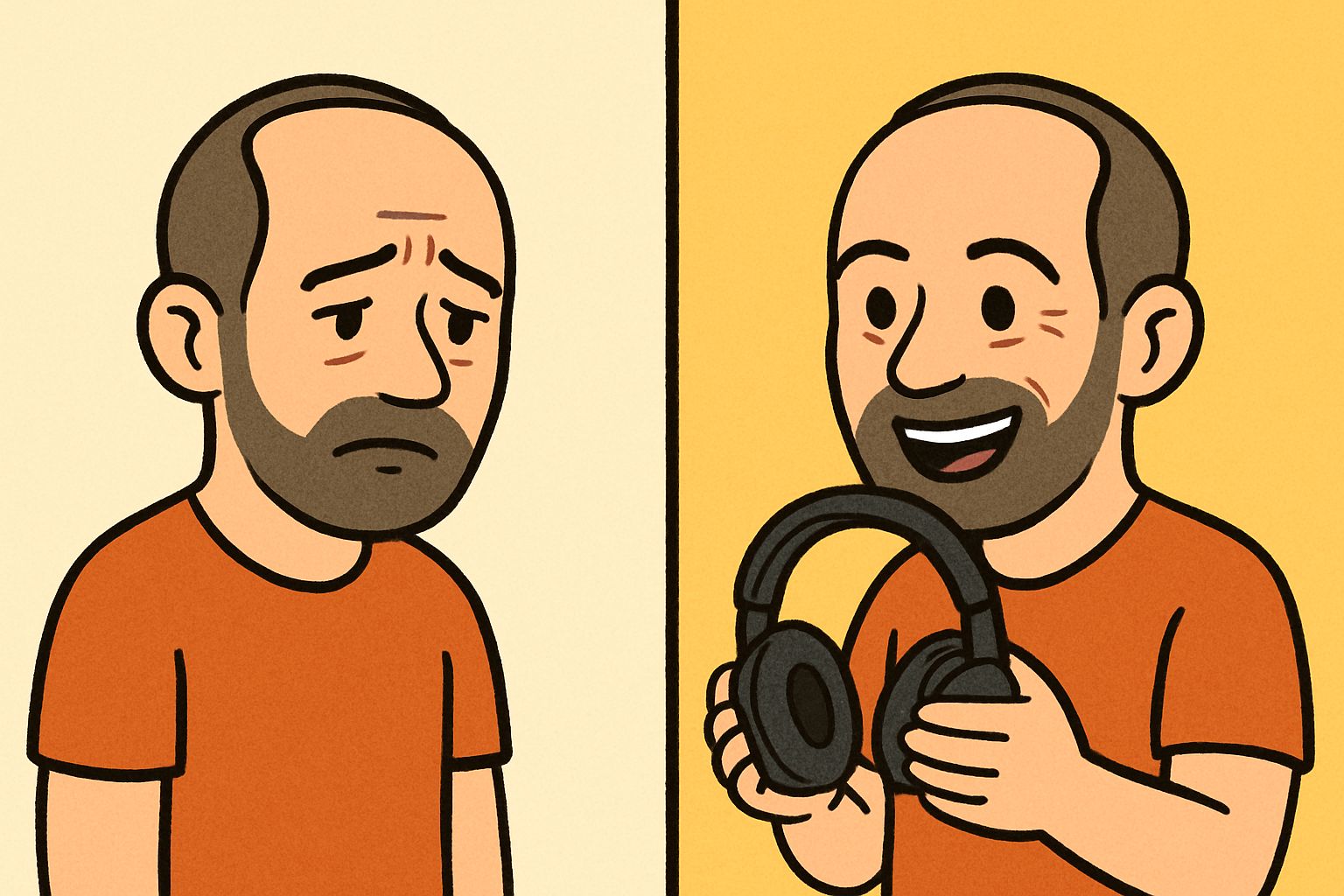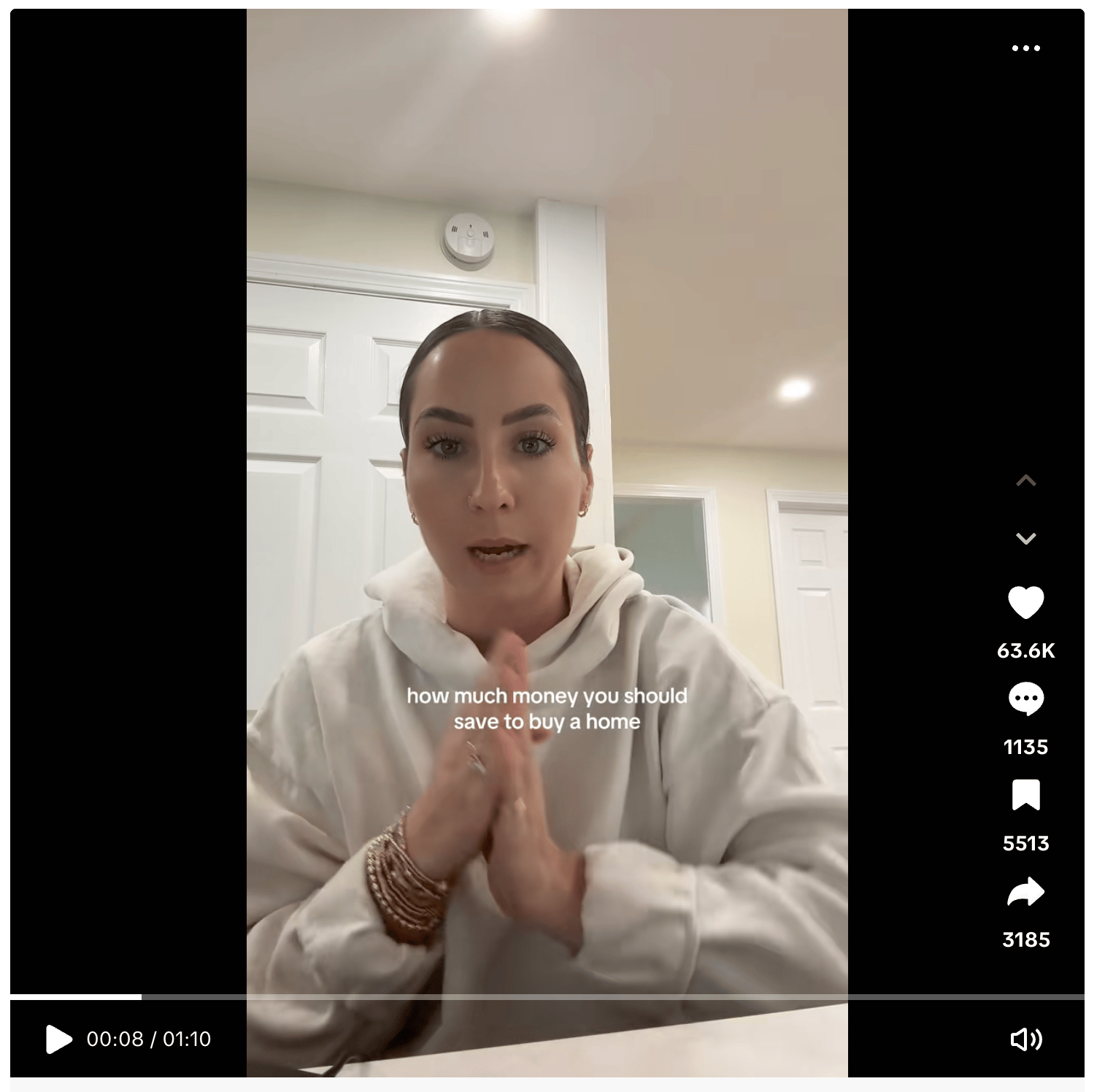- Beyond the Balance
- Posts
- Why We Buy Things We Don’t Need
Why We Buy Things We Don’t Need
And how to prevent impulse purchases
Hey — it’s Lee from Refresh.me.
Amazon Prime Day was just a few weeks ago.
Millions of people are now proud owners of things they didn’t need, didn’t want the week before, and probably won’t use next month…😅
Air fryers, vacuums, and that “amazing deal” on a gadget they’ve never heard of before Tuesday.
Sound familiar?
In today’s issue:
Why we buy things we don’t need and how to stop it
Putting less than 20% down (WWYD)
How a guy makes $40k a month with his side hustle
🔍 Deep Dive: The Cost of Buying Stuff You Don’t Need
It’s hard to pin down exactly how much people spend on things they don’t need, but there’s two pieces of data to look at.
1️⃣ Americans spend around $1,497 per month on non-essentials ($17,964 per year). This includes expenses like streaming services, online shopping, personal care, gym memberships, etc. These aren’t needs but they’re also not unreasonable spends.
2️⃣ Americans spend an average of $151 per month on impulse purchases, $1,812 per year if you do the math. These are things purely bought without prior planning or thought, but not necessarily things you don’t need.
I’d estimate that what people spend purely on things they don’t need is somewhere in between.
Why We Buy Thing We Don’t Need
Our urge to purchase things we don’t need is driven by 3 things:
Emotional drivers
Cognitive biases
Situational factors
Emotional Drivers
Buying something we want increases dopamine, making us happier (in the moment). It fills our desire for instant gratification and gives us a burst of joy.
Seems like a quick fix when you’re feeling down, but it isn’t productive to your bank account.

If we’re feeling stressed, anxious, or tired, we’re more likely to succumb to the emotional drivers at play and make a purchase to fill the void.
Cognitive Biases
This is where I think things get interesting. Even when we aren’t seeking a dose of happiness, we’re influenced by cognitive biases.
1️⃣ Loss Aversion: We’re afraid of missing out on a good deal or a limited-time offer, so we pull the trigger when we shouldn’t.
2️⃣ Social Proof: Advertising makes it seem like everyone else is purchasing the item and enjoying it, which makes us want to buy it even if we hadn’t planned to.
3️⃣ Anchoring Effect: Our brains put undue emphasis on the first price we see, making any subsequent discount seem super attractive (even when it isn’t).
4️⃣ Mental Accounting: People think about cash and credit differently, making it seem like “less of a big deal” to buy something if it’s on credit.
Situational Factors
There are entire teams of people who design the physical and online store environments to increase your desire to buy something.
The aesthetic of the store, the temperature, smell, and music are all chosen intentionally. It might sound weird, but you’re more likely to make an impulse purchase in a well-lit store with friendly employees and upbeat music.
When online shopping, the number of steps in the checkout process makes a huge difference. This is why you’ll see “Buy Now” options on a lot of sites.
How to Stop the Cycle
These 4 strategies have helped me prevent unnecessary purchases:
1. The 24-Hour Rule
For any non-essential purchase over a certain dollar amount, wait 24-hours before buying.
(You choose what this dollar amount should be.)
What this looks like in practice:
Add items to cart but don’t checkout.
Write down what you want to buy and why.
Wait 24 hours to revisit the decision.
If you still want it and can explain why, consider purchasing.
Most impulse desires fade within 24 hours. The item that felt urgent yesterday often seems unnecessary today.
2. Calculate the Hours Worked
How many hours would you need to work to cover the expense? Use your after-tax hourly wage for this math.
A $100 impulse buy = 6.7 hours of work at $15/hour after tax.
Ask yourself: Is this worth 6.7 hours of my life?
This works because time feels more valuable than abstract dollar amounts. When you realize you’d have to work an entire shift to grab that one item, it doesn’t seem so attractive anymore.
3. The One-In-One-Out Rule
This one is great for items like clothes, kitchen gadgets, and books. For every new item you buy, donate or sell something you already own.
Here’s what usually happens:
If I want to buy this new shirt, I need to donate another item in my closet.
I can’t think of a piece I’d want to donate, so I don’t buy the new shirt.
Or I donate a piece in my closet easily and realize I probably didn’t need to purchase it to begin with. Now I’m more cautious on the next purchase.
The friction of deciding what to remove often shows you don’t need the new item.
4. Add a Line in Your Budget
Sounds silly, but set aside a specific amount in your monthly budget for impulse purchases.
It could be $50 or $100 for “fun money” or impulse buys. When it’s gone, its gone (no exceptions).
This gives you an outlet for impulse desires while limiting the potential damage.
Put It Into Practice
Look at your expenses for the last month.
Ask yourself:
How many were things you didn’t need?
How can I prevent a purchase like this in the future?

💵 Budget Breakdown: Saving for a Home Down Payment
I came across this TikTok video from a girl named Mads. Her and her husband just purchased a home with less then 20% down using a VA loan.
In the video, she talks about how the cost of home ownership shocked her. She says she wouldn’t have been able to afford the home if they had to put 20% down + closing costs + having an emergency fund.
A mortgage lender commented, saying: Most people do not put 20% down, especially on their first house. We tell people plan for 3-5% down payment and another 3-5% for closing costs.
There are pros and cons to this, but one notable con is PMI. If you put less than 20% down, you often have to pay Private Mortgage Insurance to protect the lender in case you can’t make your mortgage payment.
This is a sunk cost and makes your overall mortgage payment higher, so some people are super against it.
What would you do? |

🔗 Quick Links
👀 Savings tips for when money is tight.
📈 This guy’s $40k a month side hustle.
💰 How this woman gets paid to sit in parked cars.
P.S. — Are you on X? If so, follow me on X/Twitter to catch my daily thoughts on personal finance and engage directly with me.
After the first day of Prime Day...
Who didn't buy anything and invested it instead?
— Lee Schmidt (@leeschmidt123)
4:20 PM • Jul 9, 2025
What'd you think of this issue? |
